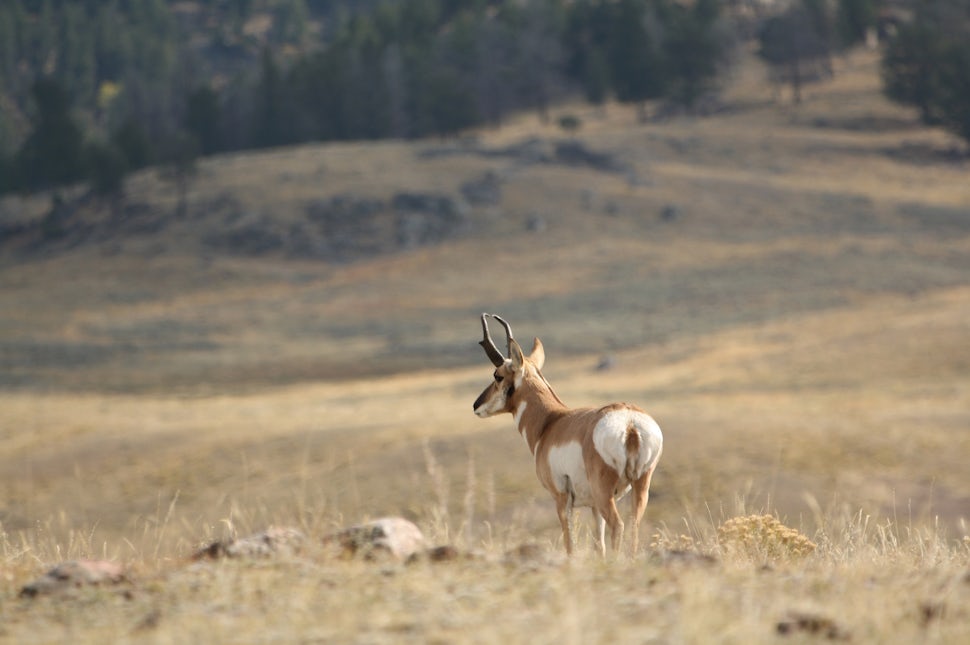North America's Fastest Runner: The Pronghorn of Yellowstone
They can run at speeds up to 55mph. That makes them the fastest land animal in North America…by a long shot, and also the second fastest land animal in the world.

Over the next few months, Yellowstone National Park will be going through one of it’s most drastic seasonal changes, the transition from winter to spring.
Snow is progressively starting to melt, temperatures are slowly rising, roads are being plowed and a lot of the parks’ wildlife are making their way back into frame. Some are coming out of hibernation, some are migrating back into the area and others are just easier for us to get to as the snow melts.
When it comes to wildlife in the park and the Greater Yellowstone Ecosystem, it’s hard not to default to bears, wolves and bison…but those three species are just the tip of the iceberg. Yellowstone has the largest concentration of mammals in the lower 48 states at 67 species, so after seeing the top three to five more popular park residents, you can dive deep into finding the other 60-something locals. If I were you, I think I’d start with the pronghorn.
Pronghorn are probably most known for their running abilities. They can run at speeds up to 55mph. That makes them the fastest land animal in North America (by a long shot) and also the second fastest land animal in the world. Everything about them is built for speed. Their heart, lungs and windpipe are all abnormally large for the size of their body…this allows them to take in a lot of air while on the move. Often, pronghorn are mistakenly called antelope…they are not antelope, their closest living relative is actually the giraffe.
Where to see pronghorn: During Summer you can usually find them grazing in Lamar Valley. Due to migration, the majority of pronghorn leave the park in Winter, but there’s usually a small number near the North Entrance and Gardiner, MT. Outside of Montana, Wyoming, and Idaho, you can also find pronghorn populations in Colorado, Utah, Nevada, California, Oregon, Arizona, New Mexico, Texas, North Dakota, South Dakota, Nebraska, Kansas, and Oklahoma.
Reminder: Feeding wildlife is not ok (read more about why here). Realistically, the chances of a pronghorn having any interest in being that close to a human are slim to none, but as for other animals that have gotten used to being fed by humans, we’re doing them a disservice. If you’d like to see them up close, binoculars, spotting scopes and telephoto lenses are the best bet…for you and the animal.
We want to acknowledge and thank the past, present, and future generations of all Native Nations and Indigenous Peoples whose ancestral lands we travel, explore, and play on. Always practice Leave No Trace ethics on your adventures and follow local regulations. Please explore responsibly!
Do you love the outdoors?
Yep, us too. That's why we send you the best local adventures, stories, and expert advice, right to your inbox.












